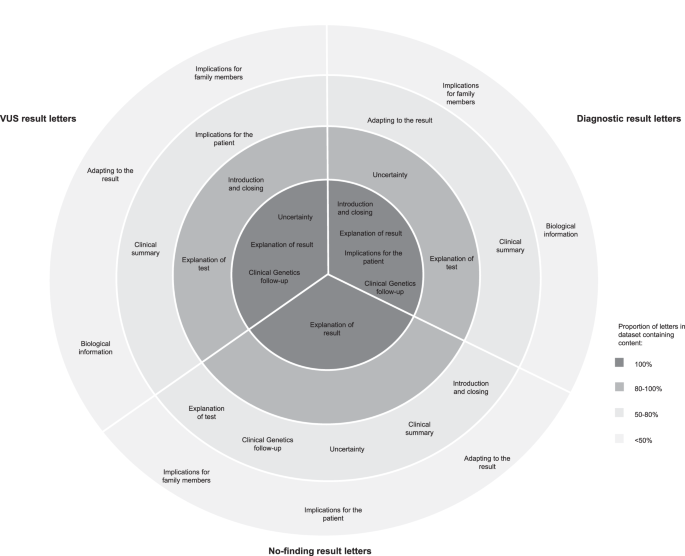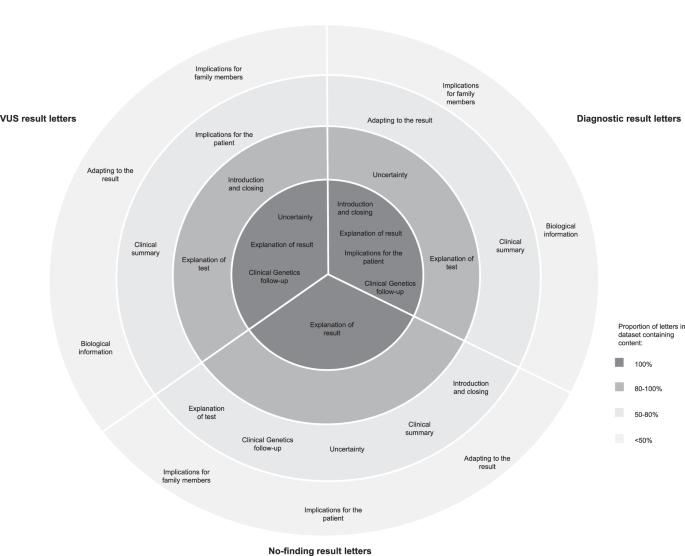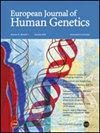Written communication of whole genome sequencing results in the NHS Genomic Medicine Service: a multi-centre service evaluation
IF 3.7
2区 生物学
Q2 BIOCHEMISTRY & MOLECULAR BIOLOGY
引用次数: 0
Abstract
Whole genome sequencing (WGS) is being used in diagnostic testing for certain clinical indications within the NHS Genomic Medicine Service (GMS) in England. Letter writing is an integral part of delivering results. However, no national guidelines for writing results from WGS exist. This multi-centre service evaluation used mixed methods to understand the content and readability of letters returning diagnostic, variant of uncertain significance (VUS), and no-finding results to paediatric rare disease patients. Eight Regional Genetics Services (response rate 47%) in England provided a total of 37 letters returning diagnostic (n = 13), VUS (n = 10), and no-finding (n = 14) results. Diagnostic and VUS results were usually delivered during an appointment; no-finding results were typically delivered by letter only. Letters were diverse in which content topics they covered and level of detail. No-finding letters (14/14) explained the result but were less likely to cover other topics. Diagnostic letters discussed the result (13/13), the condition (13/13), clinical genetics follow-up (13/13), clinical management (10/13), and adapting to the result (9/13). VUS letters explained the result (10/10), diagnostic uncertainty (10/10), and clinical genetics follow-up (10/10). Uncertainty was a common component of letters (33/37), irrespective of the result. Reanalysis or review after one or more years was suggested in 6/13 diagnostic, 7/10 VUS, and 6/14 no-finding letters. The mean reading level of letters corresponded to 15–17 years. Understanding how WGS results are conveyed to families during appointments, as well as how families interpret that information, is needed to provide a more comprehensive overview of results communication and inform best practices.


国家医疗服务体系基因组医学服务中全基因组测序结果的书面交流:多中心服务评估。
全基因组测序 (WGS) 正在英国国家医疗服务系统基因组医学服务 (GMS) 中用于某些临床适应症的诊断检测。写信是提供结果不可或缺的一部分。然而,目前还没有关于撰写 WGS 结果的国家指南。这项多中心服务评估采用了混合方法,以了解向儿科罕见病患者返回诊断结果、意义不确定变异体 (VUS) 和未找到结果的信件的内容和可读性。英格兰的八个地区遗传学服务机构(回复率为 47%)共提供了 37 封诊断结果回函(13 封)、VUS 结果回函(10 封)和未找到结果回函(14 封)。诊断结果和 VUS 结果通常在预约期间发送;未找到结果通常仅通过信件发送。信件的内容主题和详细程度各不相同。未找到结果的信件(14/14)解释了结果,但较少涉及其他主题。诊断性信件讨论了结果(13/13)、病情(13/13)、临床遗传学随访(13/13)、临床管理(10/13)和适应结果(9/13)。VUS信函解释了结果(10/10)、诊断不确定性(10/10)和临床遗传学随访(10/10)。无论结果如何,不确定性都是信件的常见内容(33/37)。6/13封诊断性信件、7/10封VUS信件和6/14封未发现信件建议在一年或一年以上后进行重新分析或复查。信件的平均阅读水平为 15-17 岁。我们需要了解 WGS 结果在预约期间是如何传达给家属的,以及家属是如何解读这些信息的,以便更全面地了解结果传达情况并为最佳实践提供参考。
本文章由计算机程序翻译,如有差异,请以英文原文为准。
求助全文
约1分钟内获得全文
求助全文
来源期刊

European Journal of Human Genetics
生物-生化与分子生物学
CiteScore
9.90
自引率
5.80%
发文量
216
审稿时长
2 months
期刊介绍:
The European Journal of Human Genetics is the official journal of the European Society of Human Genetics, publishing high-quality, original research papers, short reports and reviews in the rapidly expanding field of human genetics and genomics. It covers molecular, clinical and cytogenetics, interfacing between advanced biomedical research and the clinician, and bridging the great diversity of facilities, resources and viewpoints in the genetics community.
Key areas include:
-Monogenic and multifactorial disorders
-Development and malformation
-Hereditary cancer
-Medical Genomics
-Gene mapping and functional studies
-Genotype-phenotype correlations
-Genetic variation and genome diversity
-Statistical and computational genetics
-Bioinformatics
-Advances in diagnostics
-Therapy and prevention
-Animal models
-Genetic services
-Community genetics
 求助内容:
求助内容: 应助结果提醒方式:
应助结果提醒方式:


